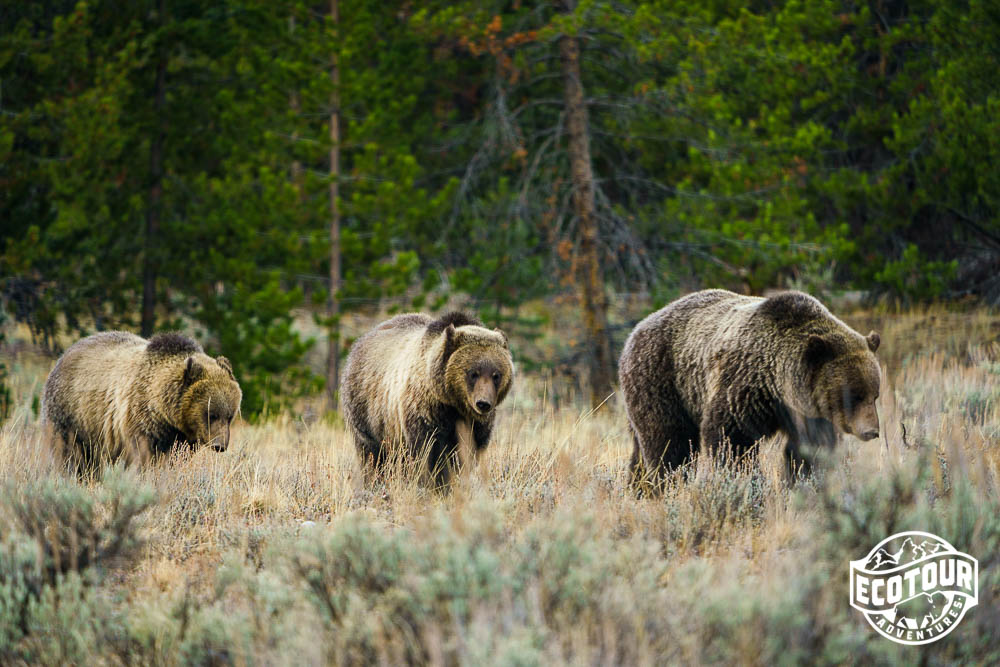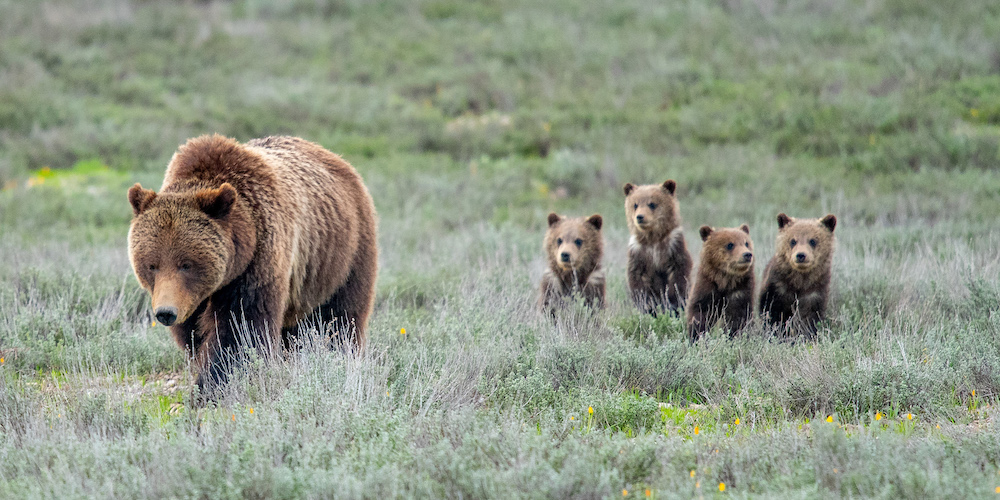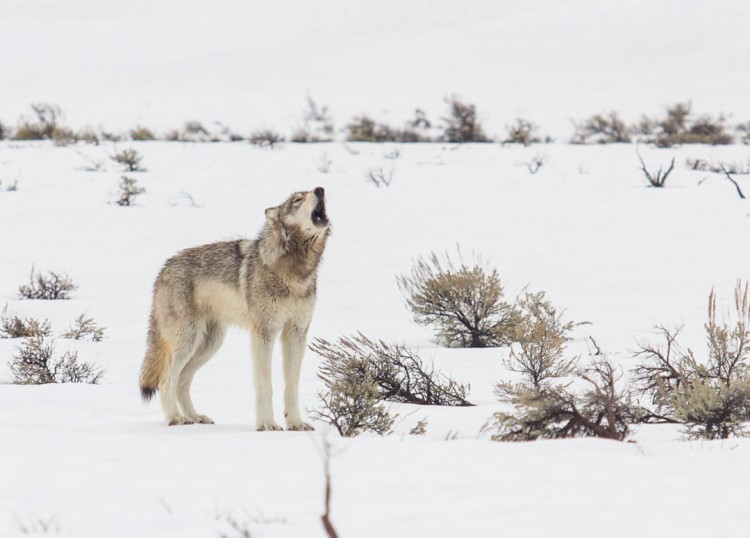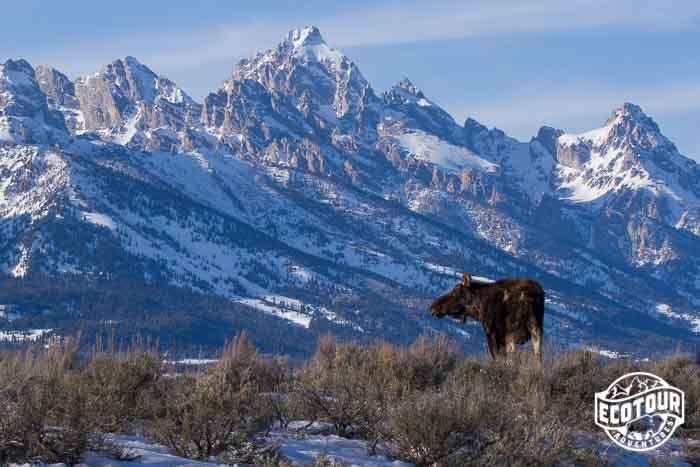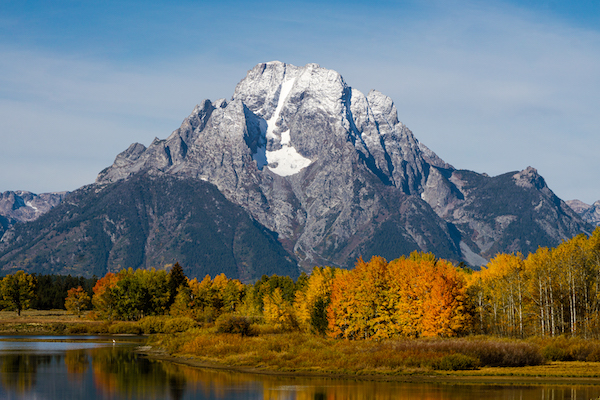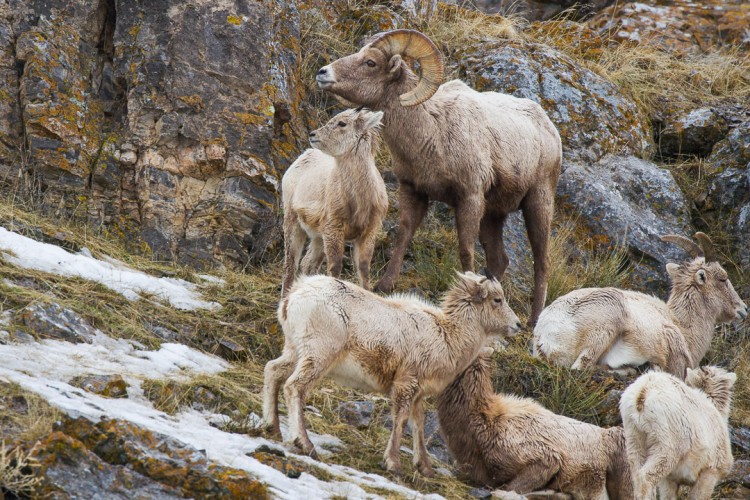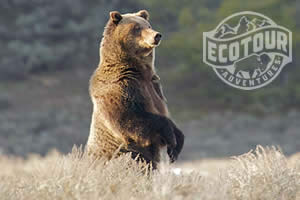Though Grizzly bears can be dangerous to humans taking a few steps can drastically reduce your chances of a negative encounter.
Bear season is beginning! We had fresh grizzly tracks in Grand Teton this week and bears have been observed in northern Yellowstone as well. Having recently emerged from hibernation, bears are on the move, seeking food sources ranging from winter killed carcasses, to plant roots and seeds, and small mammals. Though Grizzlies can be dangerous to people, understanding what causes conflict and knowing how to prevent it are key to coexistance across the Greater Yellowstone Ecosystem and other wild places where grizzlies roam. Read on to learn more.
What Causes Grizzly (and other animal) Conflict
There are three rules with bears (and many other animals) to reduce the chances of conflict. Bears will actively defend:
- Personal Space
- Cubs
- Food
Like most animals including humans, bears have personal space boundaries which they will aggressively defend. While in many instances bears will simply move away from encounters with people, sometimes this does result in defensive behavior. This is especailly the case when grizzlies have dependant cubs. Grizzly cubs stay with their mothers for two and a half years before dispersing.
The final key to reducing bear conflict surrounds food. As omnivores, bears are constantly searching for food and will eat just about anything they can find. In the spring, bears emerge from hibernation having lost over 20% of their body weight and will be quite active searching for winter killed carcasses and other food (see our Spring Grizzly blog post for more information). Bears will aggressively defend food, and are especially protective of human food due to its generally higher caloric content.
Grizzly 399 went into hibernation with 4 cubs on January 1st 2021, we're hopeful to see the group back in Grand Teton in the next few months!
How to Avoid Grizzly Conflict
Despite over 4 million people visiting Yellowstone and Grand Teton National Parks annually, dangerous bear encounters are rare. The last fatal bear encounter in the parks was in 2015.
Preventing encounters is key and comes down to four main things.
- Travel in Groups of Four or More - Grizzlies are unlikely to attack groups of people. If you encounter one be sure to stand next to eachother so the bear can see multiple members of the party. Talk to the bear with arms raised to let it know you are there. DON’T RUN, it may provoke a chase response. Slowly back away while facing the bear even if it charges. Bears frequently bluff charge, stopping short of their target or veering away at the last second.
- Pay Attention to your Surroundings and Make Noise - Making noise in low visibility areas, and being alert to your surroundings can reduce the likelihood of surprising a bear. If bears know people are nearby they will often move away without conflict. People can also safely move around bears they observe from a distance, or retreat to another location. Yellowstone and Grand Teton National Park guidelines require people to remain 100 yards from predators like grizzlies, and 25 yards from other mammals such as bison or elk.
- Store Food Properly - Keeping human food away from bears is key to preventing encounters in bear country. Both the National Park Service and US Forest Service require food storage in the Greater Yellowstone Ecosystem during months when bears are active. Grizzlies are able to smell food over a mile away! Most developed campsites have bear resistant containers to store food and other odorous items. Backpackers must carry bear resistant canisters or hang food four feet out and ten feet above the ground. Additionally, keeping a clean camp, cooking away from sleeping areas and never storing food in tents will help prevent bears from entering camping areas.
- Carry and Know how to use Bear Spray - We always recommend carrying bear spray, which is comprised of capsaicin powder, the active ingredient in chili peppers. Bears have extremely sensitive mucus membranes and research has shown spray is up to 98% effective when used properly. In contrast, research currently in press by bear biologist Tom Smith found that 40% of people who use firearms to defend against bears are injured or killed. Learn common techniques for carrying bear spray effectively here!
An adult female grizzly crosses the road in Jackson Hole during a recent bear jam. When observing bears in Grand Teton or Yellowstone National Parks it is important to follow the directions of Park Rangers and give bears space to travel across roadways. This photo was shot with a telephoto lens which makes the bear seem much closer than she actually is to the Ranger!
Are Other Animals in the Greater Yellowstone Ecosystem Dangerous to People?
Despite public perception, the most dangerous animals in the Greater Yellowstone Ecosystem aren’t carnivores at all. Bison are responsible for more injuries than any other animal due to people approaching too closely. Cow moose are very protective of calves especially in the early summer and are especially agressive towards domestic dogs who they see as predators. Giving these animals the space they need will usually prevent a negative encounter and bear spray will deter them if they do become defensive.
There is a lot of mythology surrounding wolves which falsely accuses them of being more dangerous to people than other wild animals. There is little evidence to suggest that wild, healthy wolves are aggressive to people. Millions of people explore the wild country of the Greater Yellowstone Ecosystem each year, and no one has ever been killed or seriously injured by wolves. However, wolves do occasionally attack and kill domestic dogs in their territory, so care must be taken to protect pets from this rare occurrence.
Wildlife Guide Laura Krusheski snapped this photo of a howling wolf from the Lower Gros Venture Pack on a spring wildlife tour in Grand Teton National Park, just minutes from the town of Jackson, WY.
In developed areas of the country mountain lions are increasingly coming into conflict with humans. They typically avoid people and in rural Wyoming only 4 attacks have been documented in recent history, none fatal. Like bears, two of the lions were defending kittens, the other two were sick or injured. The same rules apply here for protecting yourself from a lion, be observant in the wild such as avoiding using headphones. If a lion is encountered, face the animal, raise your arms, speak calmly, and slowly retreat. Lions usually flee human encounters but if one attacks FIGHT! Bear spray is effective on most animals and would be beneficial in this situation.
Keeping the Wild
The vast majority of visitors to the GYE enjoy its landscapes, flora, and fauna without any conflict, leaving with a greater appreciation of this global treasure. Taking a few easy steps to steward our parks and forests goes a long way towards keeping our animals wild and free. Don’t feed animals, give them the space they need to live without stress, and protect yourself with bear spray when venturing out into the wild. Special thanks to Mark Gocke and the staff of Wyoming Game and Fish for help with this post! For more information see:
Jackson Hole Ecotour Adventures operates 365 days a year in Grand Teton and Yellowstone National Parks, offering half day, full day, and multi day wildlife safaris. To learn more about joining us on a wildlife safari visit our website or call (307) 690-9533. We hope to see you soon!
Photos and blog by Naturalist Josh Metten


